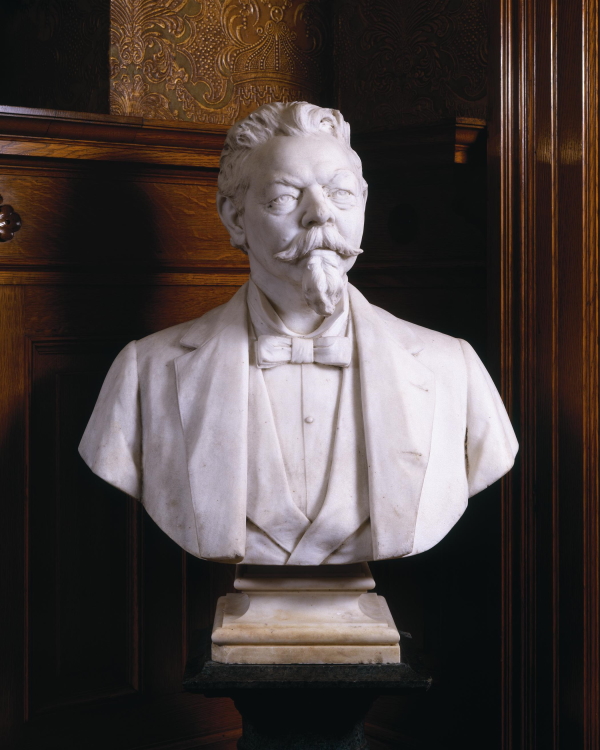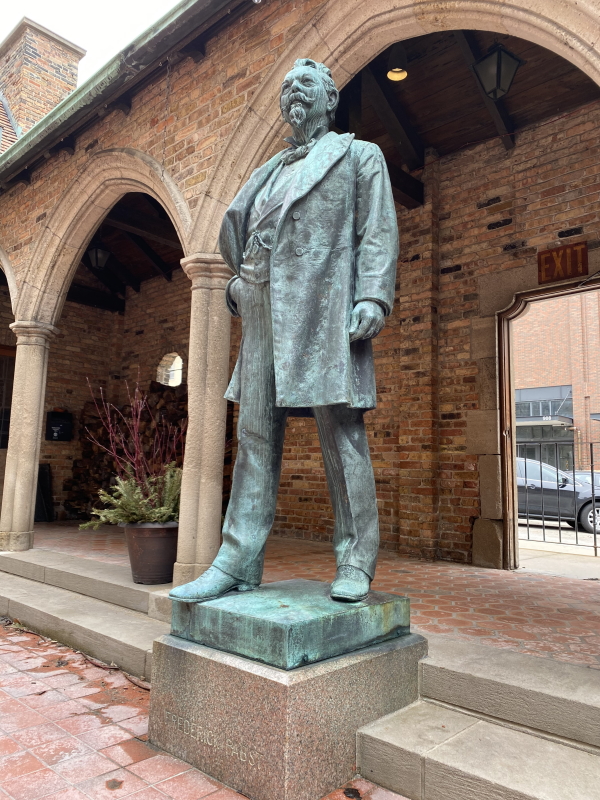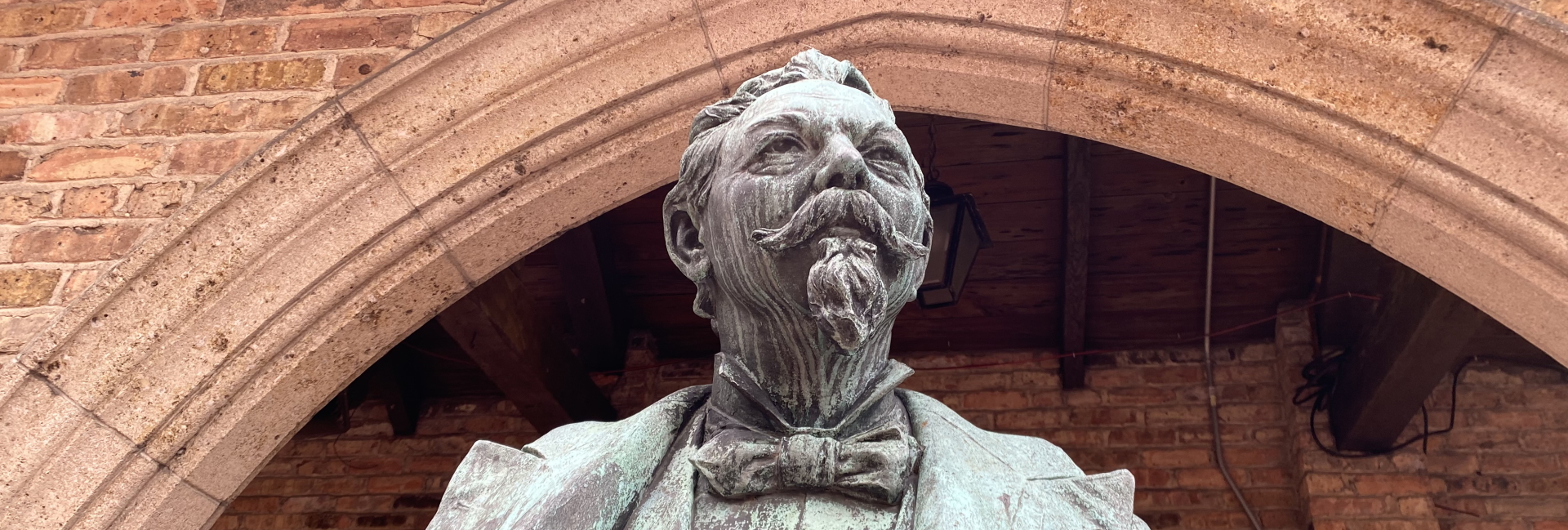By Pabst Mansion
Captain Frederick Pabst is a man that left his footprint in the city of Milwaukee. Even today there are several monuments of, or erected with the assistance of, the brewing magnate. One of the most notable statues in the city, The Victorious Charge, recognizes American Civil War soldiers from the 26th Wisconsin Volunteer Infantry Regiment for their incredible acts of service for their country and state. It was created by American-born sculptor, John Severino Conway. The bronze statue features three soldiers pressing on into the battlefield while one of their fellow comrades is fallen at their feet. It is located on West Wisconsin Avenue on the Marquette University Campus directly in front of the Wisconsin Club and Straz Hall. It symbolizes that the United States must keep pushing forward and create a better future even when suffering significant losses. It was commissioned to be built in 1885, but the project experienced major setbacks like not having enough funding to finish the work and the Mitchell family behind the project was forced to abandon it. Then, in 1895 Lydia Ely Hewitt proposed to amass a collection of autographs from famous politicians, authors, and artists to sell in order to raise funds to finish the project. It was filled with positive messages and quotes hoping for the completion of the monument honoring those that had served. It was bought by none other than Captain Frederick Pabst in 1898.
The Victorious Charge by John Severino Conway, 1898
It is no surprise that eventually there would be a statue of Pabst himself given his love of art and presence in the community. He eventually got his turn when sculptor Gaetano Trentanove created two different statues remembering one of Milwaukee’s leading brewers. Completed in 1904 and 1907, the two works were only spaced by three years. Pabst met the famous sculptor Trentanove when he came to Milwaukee in the summer of 1893 to work in a studio in the lower levels of the Layton Art Gallery. He made a living creating magnificent Carrara marble portrait busts of Milwaukee’s wealthiest citizens and his fame continued to grow in the city. Captain Pabst eventually reached out to the Italian-born artist and sculptor that same year to create a bust depicting his daughter, Marie Pabst Goodrich, on her wedding day. It was most likely a gift to the newlywed couple from the bride’s father. Following Captain Pabst’s passing in 1904, Gaetano Trentanove immortalized him by creating a similar Carrara marble bust in honor of Milwaukee’s great citizen. This marble bust is still located in the Pabst Mansion today, greeting visitors as they enter the reception hall of his former home.

Bust of Federick Pabst by Gaetano Trentanove, c. 1904
Although crafted by the same artist, the other statue depicting Pabst is different in design and medium. It shows his entire body and, like the statue that Pabst helped save from the brink of disaster, is made entirely out of bronze. This work, however, it is not located in the Pabst Mansion and is instead installed on the grounds of the Pabst Brewing Company.

Bronze statue of Federick Pabst by Gaetano Trentanove, c. 1907
It is interesting to notice the distinct differences between the publicly displayed statue and the private one. The earlier marble portrait of Pabst created by Gaetano after his death portrays him with a questioning facial expression and a calmer tone. The bronze statue of him at the brewery gives a more imposing interpretation of the great beer baron. The sculpture shows him in a powerful stance gazing at everybody that tours his brewery. Although it can be overshadowed by the louder King Gambrinus statue located near it, the Trentanove statue captures the captain’s presence as a powerful, yet humble leader. Overall, Captain Frederick Pabst contributed a lot to the city of Milwaukee and its art projects – it is only fair that his own likeness be immortalized through statuary.
Written by Will McClure

